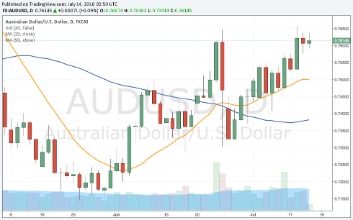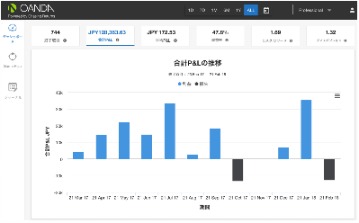08 Nov Bull V Bear Markets
Contents

The driving factor behind a bull market is the growth of an economy, such as the increase in a country’s gross domestic product , a growing employment rate, or low interest rates. A beginner’s guide to understanding the differences between a bull and a bear market, indicators for these market phases, and what to do in each. Stash assumes no obligation to provide notifications of changes in any factors that could affect the information provided. This information should not be relied upon by the reader as research or investment advice regarding any issuer or security in particular. There is no guarantee that any strategies discussed will be effective. When the value of your investments goes up, the urge to sell at a profit may strike.


In either of the scenarios, the causes are interdependent, and the cascading effect for the same is observed. A prominent example of a Bear Market is the recession, followed by the Wall Street stock market crash of 1929. The investors were struggling to exit the market with sustainable losses getting incurred. To prevent excessive losses, investors continued selling their stocks, causing a further decline. The market collapsed on October 29, 1929, followed by a sustained depression in the economy called the ‘Great Depression.’ The Dow Jones Industrial Average declined by almost 90% through 1932.
Economic Factors: Unfavorable Conditions
However, in a bearish market, the job market is stiff, and efforts are being made to control expenses rapidly if the situation is not improving. The stock market of any country in the world is like a heartbeat, which is volatile throughout, depending on various circumstances. The market will thus go either up or down, which in financial terms is referred to as a ‘Bull Market’ when the general market scenario is upbeat, and the stock market is rising. On the other hand, if the market moves downwards, it is referred to as a ‘Bear Market.’ The terminologies apply to how each of these animals attacks their opponents. The bull will thrust its horns in the air in respective scenarios, whereas a bear will stamp its paws down on its prey. Before you start investing, you should consider what your investment strategy will be.
This is why the bull is said to be symbolic of an upturn in economic activity. Bear markets are diverse, if anything, varying in severity, length, and impact. Between the end of World War II and April of 2022, there have officially been 14 bear markets. Based on historical Bloomberg data, their severity fluctuated from a 51.9% drop in the S&P 500 to a 20.6% decline. Human psychology plays a significant role in the price of stocks, with investor sentiment and emotion being a sizable factor in the market’s overall direction. The stock of Kingfisher airlines in 2006 was at INR 76 and later in 2007 it reached its peak of INR 300+ only to fall drastically and never recover.

Historically, it is seen that both https://en.forexbrokerslist.site/s occur one after the other, in alternation. Some of the indicators include moving averages, the bullish and bearish percentage index and the volatility index . The bull market is the one that appears strong and powerful, rising in value. When the bull attacks it starts from a low pointing swiping up to a high point. A bear market looks as if it’s moving down from a high point, with a bear’s attack swiping down from high to low. More specifically, however, a bear market describes any stock index or individual stock that drops 20% or more from its recent highs.
Rolling with the bears and bulls of the stock market
However, if you’re following a buy-and-hold strategy to build wealth over the long term, you may want to think twice before trading your securities. Expansionary PoliciesExpansionary policy is an economic policy in which the government increases the money supply in the economy using budgetary tools. It is done by increasing the government spending, cutting the tax rate to increase disposable income etc. The job market in a bullish situation is very bright, and there are more disposable incomes in the hands of the public in general.
Some investors point out that on bull markets we tend to see higher highs and higher lows, but that’s not always the case. A bull market takes place when optimism becomes the norm and investor confidence is high. Share prices begin to rise as buyers decide to take on more risk, believing that future prospects will be better and that they’ll be able to sell their positions at an even higher price later on.
The history of bull and bear markets
In a https://topforexnews.org/ market, there is strong demand and weak supply for securities. In other words, many investors wish to buy securities but few are willing to sell them. As a result, share prices will rise as investors compete to obtain available equity. In the investing world, the terms « bull » and « bear » are frequently used to refer to market conditions. These terms describe how stock markets are doing in general—that is, whether they are appreciating or depreciating in value. And as an investor, the direction of the market is a major force that has a huge impact on your portfolio.
- A bear market will eventually end after a large-scale economic event.
- When acquiring our derivative products you have no entitlement, right or obligation to the underlying financial asset.
- More specifically, the terms « bullish » and « bearish » describe the state of a market in relation to its current direction.
- Robo-advisors are digital financial advisors that automatically select and manage your portfolio based on your investment preferences.
Investment advisory services are only provided to investors who become Stash Clients pursuant to a written Advisory Agreement. Generally, bear markets, also known as bear runs, are characterized by at least a 20% drop in the market’s overall value for a sustained period, accompanied by a drastic drop in overall confidence in the market. As asset owners unload their risks by selling off assets, a spiral of decline is cause which may last for months or years. While bull markets can last for years, they eventually come to an end when prices reach unsustainable levels. Then asset prices may decline gradually for months, followed by a steep plunge. The bull market typically begins when market participants feel optimistic about the future.
A market is usually not considered a true « bear » market unless it has fallen 20% or more from recent highs. This results in a downward trend that investors believe will continue; this belief, in turn, perpetuates the downward spiral. During a bear market, the economy slows down and unemployment rises as companies begin laying off workers. OverviewA bull market is a market in which prices have been rising over time – and haven’t fallen by more than 20% from their peak. It’s most often used in reference to the stock market, but it can also be applied to other financial markets. A bull market is a market in which prices have been rising over time – and haven’t fallen by more than 20% from their peak.
Bull vs Bear Market: What’s the Difference?
Market IndexesA market index tracks the performance of a diverse selection of securities that make up a significant part of the financial market. It serves as an indicator of the overall financial market condition by listing the historical and real-time trends in different market segments. BearishBearish market refers to an opinion where the stock market is likely to go down or correct shortly. It is predicted in consideration of events that are happening or are bound to happen which would drag down the prices of the stocks in the market. In fact, markets can interpret them completely differently from the standard interpretation.
The three types of bear markets include event-driven, cyclical, and asset-bubble unwinds. In contrast to the bull market, the SEC defines a bear market as a time when stock prices are declining and market sentiment is pessimistic. Generally, a bear market occurs when a broad market index falls by 20% or more over at least a two-month period. The last phase indicates the further downfall of stock prices but at a slower pace. Investors start believing the worst may be over, and positive reaction starts flowing in with bear markets, eventually allowing the bullish outlook to re-enter. Identifying bull and bear markets are more art than science, as there’s no exact definition of a bull or bear market.
THE SMARTEST WAY TO SECURE YOUR CRYPTO
If it truly is a bull market, then that indeed does happen and the cycle continues, until the optimist view becomes unsustainable, the market changes and investors turn bearish. Bear and bull markets can last for months or even years, significantly impacting the price of digital assets and, in turn, your portfolio. As such, understanding the nature of market cycles when analyzing bull v bear markets is essential for anyone interacting with crypto, and wanting a deeper understanding of the big picture. Many investors also turn to dividend stocks, whose performance in the market is typically affected less by changing trends. These industries, often things like utilities, are designed to be excellent hedges against inflation and are stable in both bull and bear markets. The stock market can be bearish even while bull markets are occurring in other asset classes and vice versa.
To mitigate your https://forex-trend.net/s as you interact with crypto and build your portfolio, some market participants use a Dollar Cost Averaging strategy or DCA. The most obvious characteristic of a bear market is a sustained period of declining prices. Lows get lower, indicating a strong selling pressure as anxiety overtakes greed as the driver of the market.
Bull market conditions can last for decades, and many successful investors have bet very wrongly by trying to predict the end of a bull market. In addition, investors may benefit from taking a short position in a bear market and profiting from falling prices. There are several ways to achieve this including short selling, buying inverse exchange-traded funds , or buying put options.
While the data and analysis Stash uses from third party sources is believed to be reliable, Stash does not guarantee the accuracy of such information. Nothing in this article should be considered as a solicitation or offer, or recommendation, to buy or sell any particular security or investment product or to engage in any investment strategy. No part of this material may be reproduced in any form, or referred to in any other publication, without express written permission. Stash does not provide personalized financial planning to investors, such as estate, tax, or retirement planning.
Production costs, supply and demand, and monetary policies all affect the price of goods. There is some expected and average inflation over time, but sharp increases can be problematic. The ideal thing for an investor to do during the bull market is to buy stocks early in the trend, watch them rise in value, and sell them when they reach their peak. Several aspects, such as supply and demand, change in economic activities, and investors’ psychology affect the market – whether it goes bull or bear.
If you continue flipping a coin 100 times, there may be instances of successive heads or tails. Now, relate this to the short-term movement in the stock market, like the downward movement to tails and upward movement to heads. Reproduction or redistribution of this information is not permitted. A bear market will eventually end after a large-scale economic event. The pressure coming from sellers in that type of market will ease and turn bullish as the bears begin to run out of steam. However, not all long movements in the market can be characterized as bull or bear.

Sorry, the comment form is closed at this time.